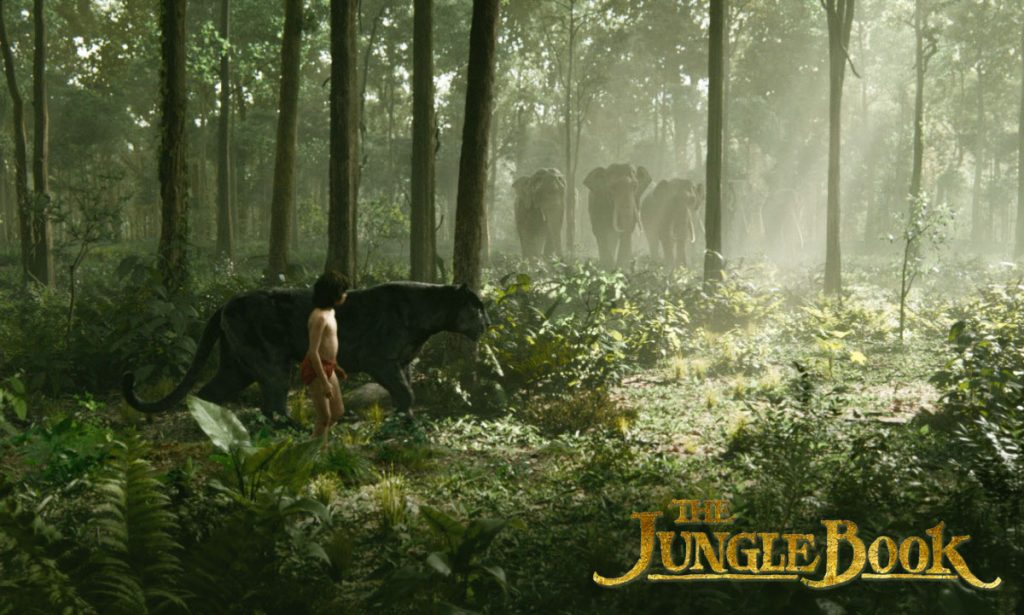
“Every studio executive dreams about the day they have a movie that plays to virtually all audiences irrespective of its rating, theme or target audience. ‘Jungle Book’ is the perfect realization of that dream,” says one box-office analyst.
The Jungle Book climbed to the top of the cinematic mountain, opening to a whopping $103.6 million domestically and $290,967,000 worldwide exceeding all expectations.
Disney’s live-action adventure demolished expectations to earn the second highest April opening in box office history, second only to last year’s Furious 7 ($147.2 million). A $100 million domestic opening is a pretty rare accomplishment for a PG-rated movie, and The Jungle Book is only the second PG-rated Disney movie to do so. (Alice in Wonderlandopened to $116.1 million in 2010.)
A good chunk of The Jungle Book’s success came from 3D and IMAX screens, earning an estimated $31 million domestically from 3D and $10.4 million domestically from IMAX. Globally, The Jungle Book reeled in $20.4 million from IMAX screens, setting an IMAX record for the biggest PG-rated opening.
There’s is a wonderful article in the New York Times which gives a rare glance into the “savvy”marketing process of The Jungle Book – some call it “magical”!
The article talks about some of the marketing strategies used to move the box office needle;
Create an early social blast, buzz. Last August Director Jon Favreau bounded onto a 7,800-seat arena at a Disney fan convention in Anaheim, Calif., and showed sneak-peek footage from his film. He hobnobbed with three “Jungle Book” stars on stage, including Neel Sethi, who plays the man-cub Mowgli. Thousands of movie posters were handed out at a marketing cost of $175 million.
Broaden the demographic – not just for kids. When animals talk in a movie, unless it’s a comedy, older moviegoers tend to skip it. Most of Mr. Favreau’s animals are not cartoonish and cuddly , but Disney could not rely on trailers and TV spots to convey that message. So bloggers and entertainment news sites to hammer home a point: Mr. Favreau used sophisticated filmmaking techniques to create the animal characters.
The Power of the Trailer as a marketing instrument: In part to make “The Jungle Book” appeal to a finicky high school crowd — older siblings tend to influence younger brothers and sisters — the first trailer was packed with scary moments (pouncing panther, snarling tiger, stampeding buffalo) while hiding the musical numbers and keeping Baloo’s goofier moments to a minimum.
Target a specific demographic. Generally speaking, females see Disney’s magic castle logo on a trailer and are pulled closer. The opposite can be true with guys. So Disney aggressively and repeatedly pitched “The Jungle Book” to male audiences.
Commercials on ESPN portrayed the movie as coming not from the studio that made “Cinderella” but “from the studio that brought you ‘Pirates of the Caribbean.’” An extended 3-D trailer for “The Jungle Book” was attached to “Star Wars: The Force Awakens,” which had an audience that was 58 percent male.
Additionally, Disney rolled out an action-oriented trailer during the Super Bowl.
Create an immersive world. To emphasize the scope and scale of this movie, Disney introduced a mazelike Law of the Jungle website in partnership with the female-leaning Tumblr; ran special promos at IMAX theaters focusing on the snake Kaa; and created a touring virtual-reality experience and 360-degree Facebook video emphasizing the “Avatar”-like world of its jungle. This was all crafted to create an experience that would ultimately move moviegoers to spend $3 to $5 more a ticket to see “The Jungle Book” in 3-D, which can lift opening-weekend sales considerably.
Utilize all Disney promotion channels and assets. Aside from marketing on ESPN (mentioned earlier), various corners of the Disney empire also were called into play to promote “The Jungle Book.” A New Year’s Day stunt on the Disney Channel, for instance, was used to portray the film as one of the year’s first blockbuster offerings for families and children.
But the synergistic heavy lifting was done by Disney theme parks. During the jam-packed spring break weeks, park theaters in Florida and California offered sneak-peek footage of the movie, with Mr. Favreau providing introductions.
The many (many) theme park stores that sell Disney merchandise had “Jungle Book” sections. And Disney built photogenic “Jungle Book” sand sculptures at its Animal Kingdom and Epcot parks in Florida.
Read the full New York Times story HERE